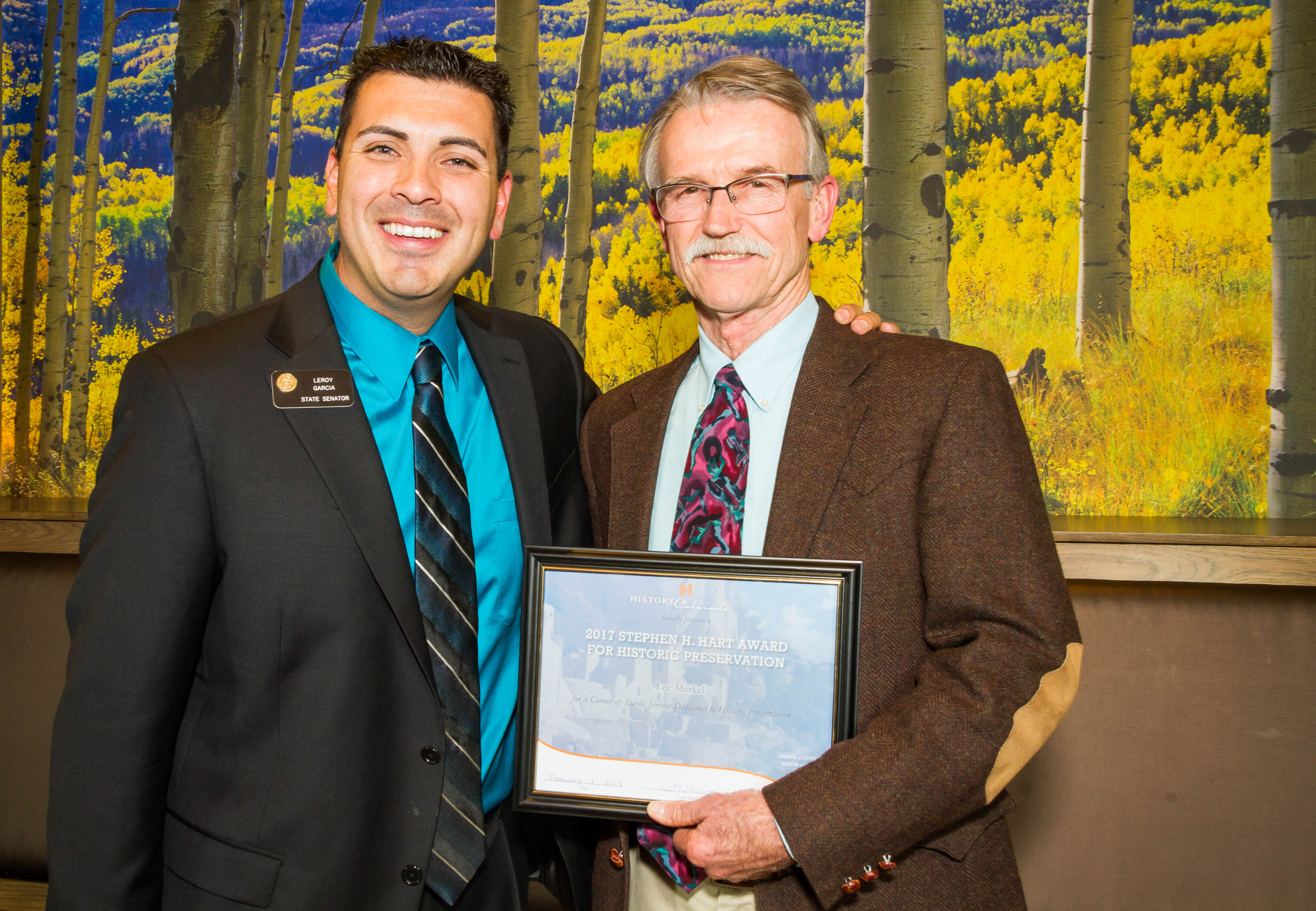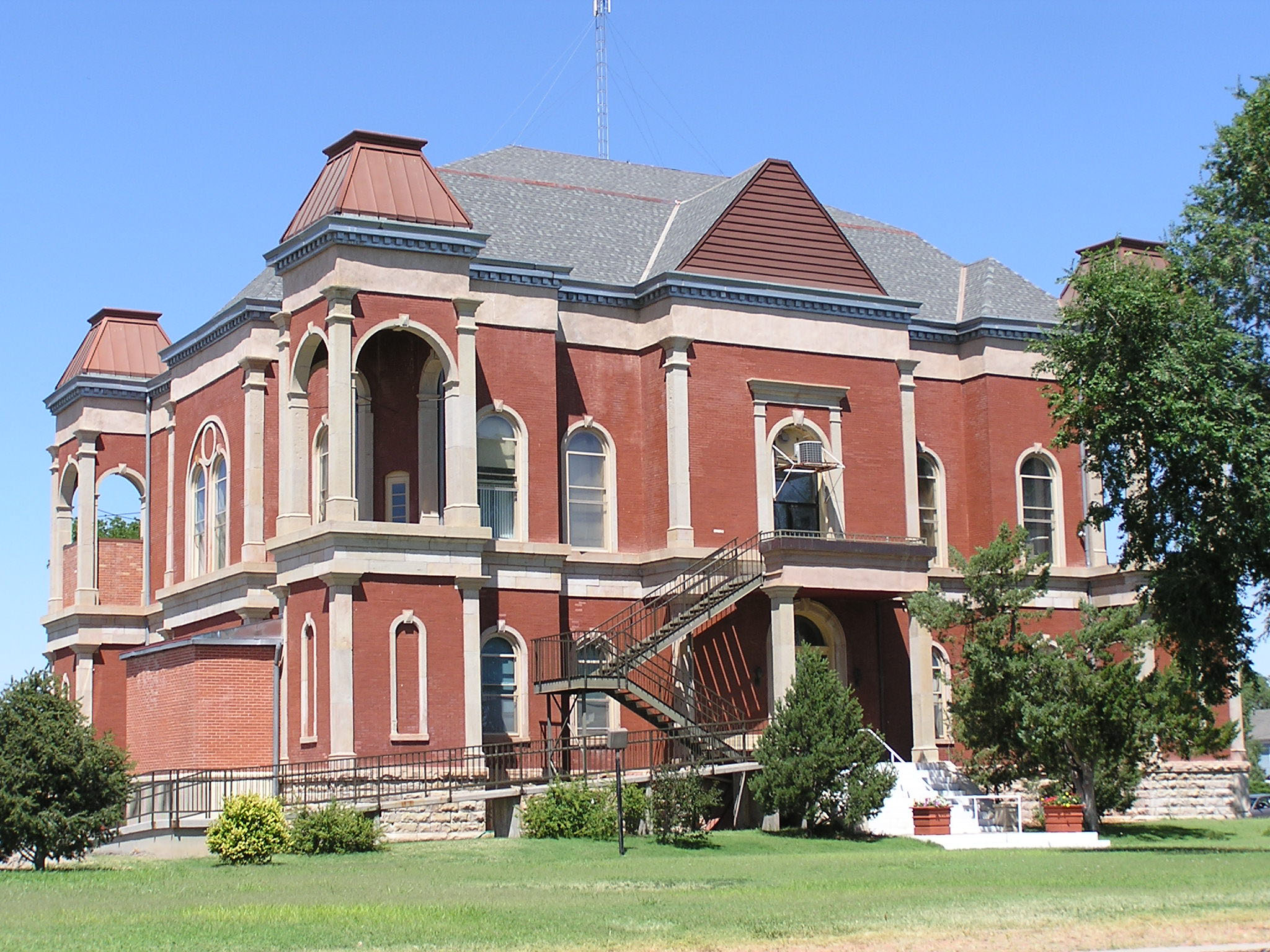Story
Forty Years of Preservation and Public Service: An Interview with Lee Merkel
Expanded from an interview featured in Heritage Magazine
Each year, History Colorado honors historic preservationists and advocacy groups with the Stephen H. Hart Awards for Historic Preservation. At the 2017 event, Lee Merkel received an award for over forty years of public service as a tireless advocate for historic resources in Colorado’s southeast region. Lee’s perspective is that preservation should be a union between the recognition of history and viable use of those resources for public good. Saving “old buildings” can have a direct and positive impact on everyday Coloradans.
It’s this attitude that’s shaped his career. Lee has either been involved in or led preservation projects totaling over $125 million in investment—from local projects to those using History Colorado State Historical Fund grants. The impact of such a career, especially in the southeast, can’t be overstated. From the City Park Wall restoration in La Junta to the Bent County Courthouse, from archaeology projects in Boggsville to the Huerfano County Courthouse and Jail—Lee has worked on some of the region’s most notable and useful historic resources.
History Colorado: How did you come to historic preservation in your professional career?
Lee: I became interested in historic preservation in my local government experience [after] growing up in the Western Reserve area of northeast Ohio during the 1950s, ’60s, and early ’70s. The Western Reserve was settled in the early 1800s, and reflects the New England heritage that most of northeast Ohio demonstrates.
HC: What makes historic preservation worthwhile for a community?
Lee: In my community development career with local governments and the state, I’ve come to realize that the retention of historic resources creates place and recognizes the history that defines a community and region. In reality, most buildings aren’t built with the craftsmanship or care that those in the 1800s and early 1900s had!
Many people view the removal of older buildings as “progress,” but in others’ opinions, those historic buildings reflect the definition of a community, and often reflect better times or, perhaps, just define the times for the value that it can represent to those who are here today. In Pueblo’s case—or in many mining communities—the actual times of prosperity may have been a century ago, but they still represent the reason that the community is there today, whether prospering or remembering its prosperity.
HC: What project have you been involved with that had a huge impact on a community?
Lee: I think of six or eight projects that DOLA [Colorado Department of Local Affairs] has funded to rebuild a substantial portion of the brick streets in downtown Trinidad over the past fifteen years. DOLA has been involved the following steps:
- Removal and salvage of the historic bricks, which are several layers thick.
- Over-excavation of the street to remove old structural elements (dirt, gravel, old concrete, or whatever may be there).
- Replacing any underground utilities (water, sewer, gas, storm drainage pipes, etc.).
- Placing all other utilities underground to remove power lines, etc., from surface and view area.
- Compacting the soil and base material.
- Pouring a concrete structural layer of ten to fifteen inches.
- Replacing the old historic bricks as the wear surface and visible part of the street.
This process retains the historic character of the downtown area of Trinidad while increasing the durability and life expectancy of the street for many decades, which will withstand the heavy mining and truck traffic that use many of the downtown streets—some of which also serve as state highways.
HC: How have preservation practices or attitudes changed over the course of your career?
Lee: When I began to serve southeast Colorado as DOLA’s regional manager in the Pueblo office, I discovered that many local government officials wanted to demolish older structures and build new ones. After I explained that they would usually find that they have more funding partners for historic restoration (State Historical Fund, DOLA, foundations, the Governor’s Office of Energy Conservation, etc.), it could save the locals significant funds by engaging with funding agencies to work toward a solution instead. There are usually more funders who will assist with preserving their heritage rather than incurring the costs for demolition and paying for new construction. This approach has become somewhat contagious in southeast Colorado, and many buildings have been preserved, enhanced, and made energy-efficient.
A lot of locals simply start with that approach now. This has all been a distinct pleasure for me.
You can watch the video presentation on Lee Merkel from the 2017 Hart Awards here.



